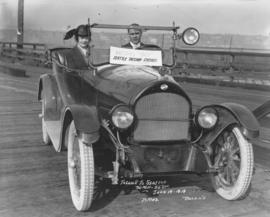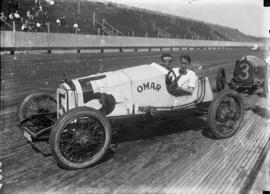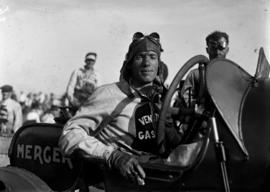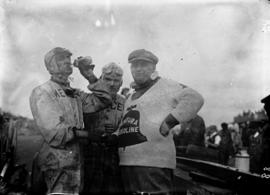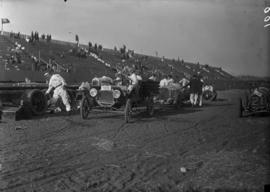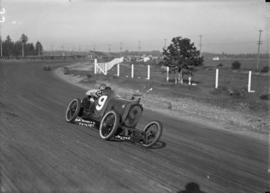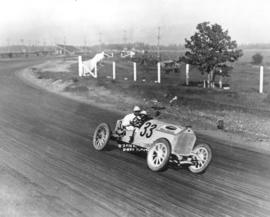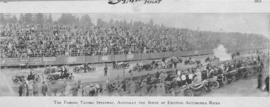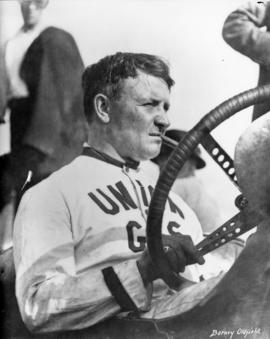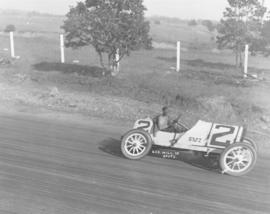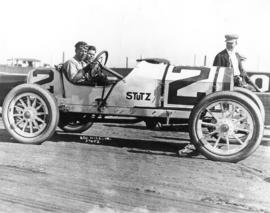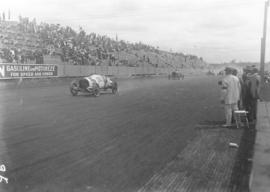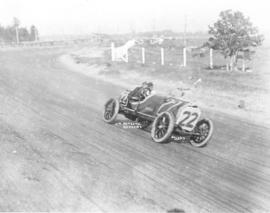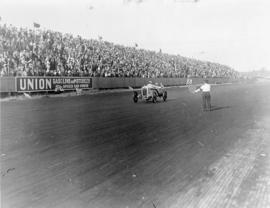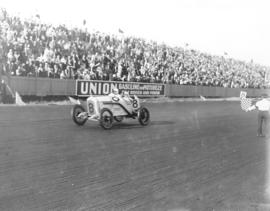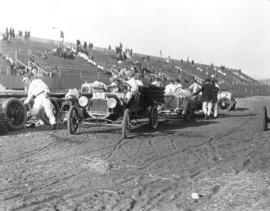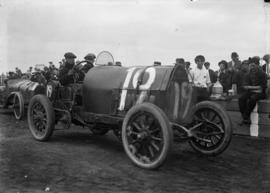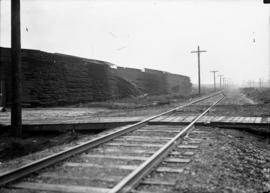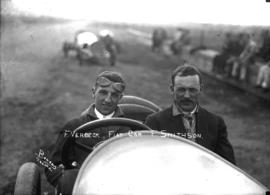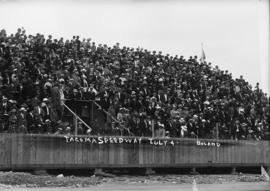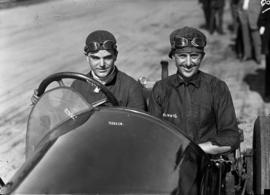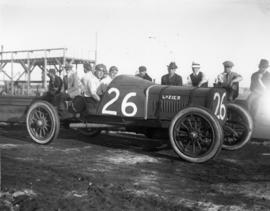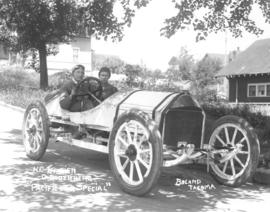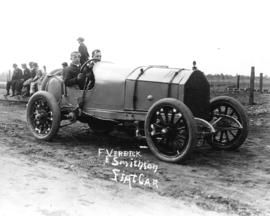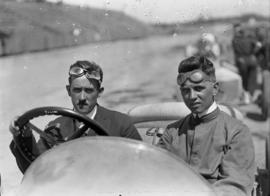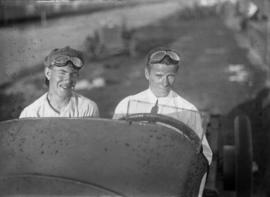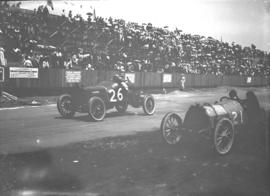- Item
- 1919-06-19
Part of Marvin Boland Photographs
Although there was no freeway between Tacoma and Seattle in June of 1919 and little actual paved road, Harry Barsamian, shop foreman for Pacific Car Co., managed to drive from the city limits of Tacoma to the city limits of Seattle in 30 minutes, 55 seconds. He was accompanied, not by the unidentified lovely miss in the front seat, but by his mechanic Victor Williams, proprietor of the Metropolitan Garage. Mr. Barsamian's time broke the previously acknowledged record of 34 minutes, 30 seconds. Victor Williams confessed to the Daily Ledger that there was one man too many in the vehicle and he was the one man; he swore never to do it again. Mr. Barsamian reported that there were no problems with the engine during the non-stop run. He declared the new stock Overland 90 Touring Car the "gamest little car in the world." Photograph ordered by the Pacific Car Co. (TDL 6-22-19, 8C) TPL-1522; G11.1-001
Barsamian, Harry; Automobiles--Tacoma--1910-1920; Automobile racing--Tacoma--1910-1920;
